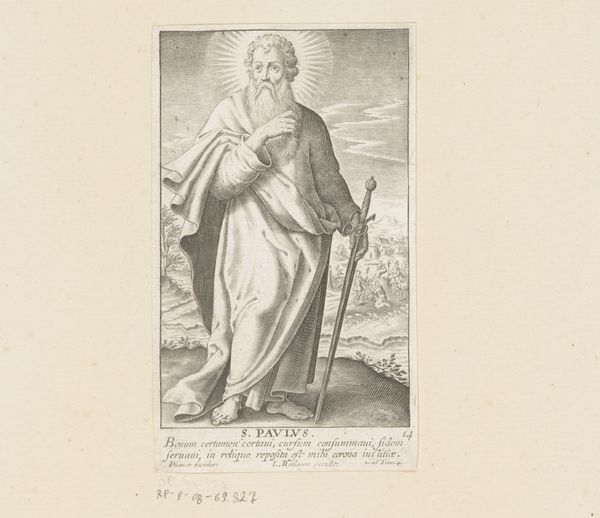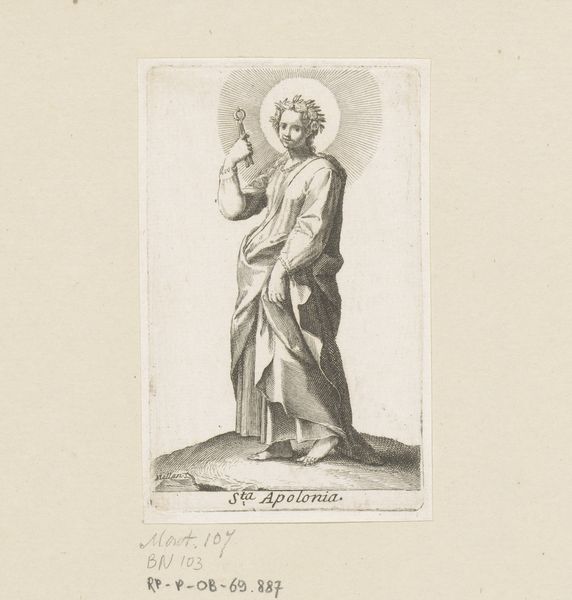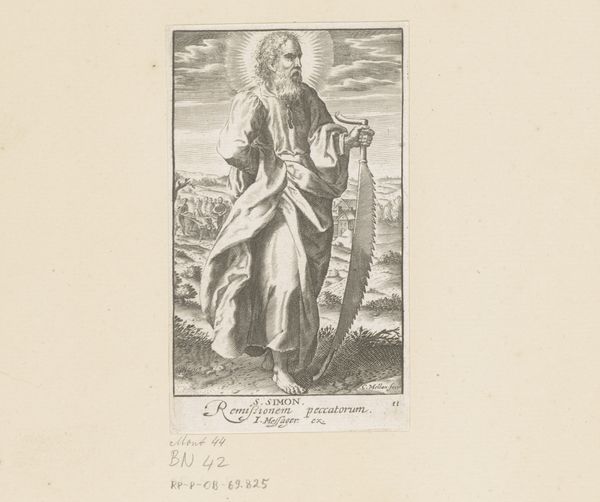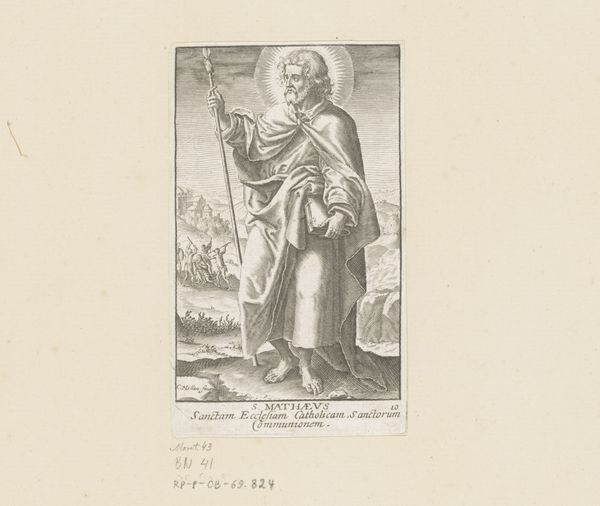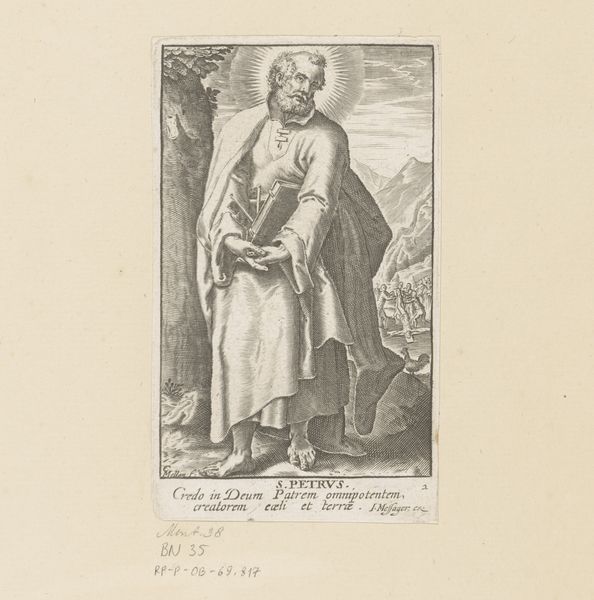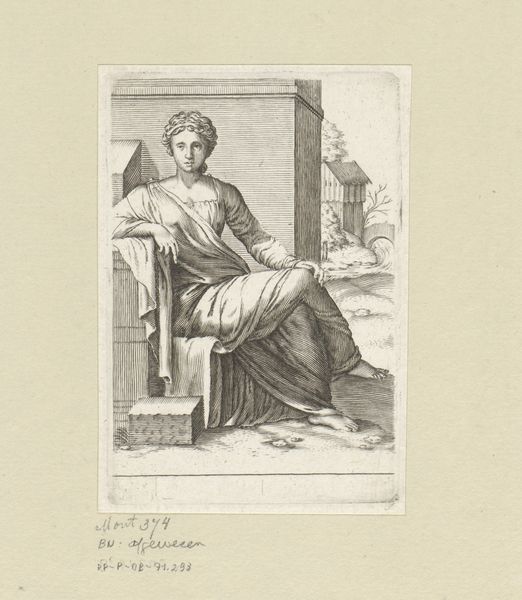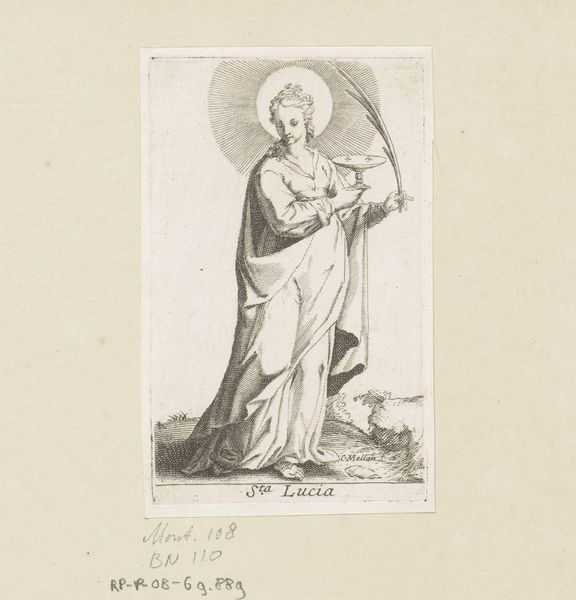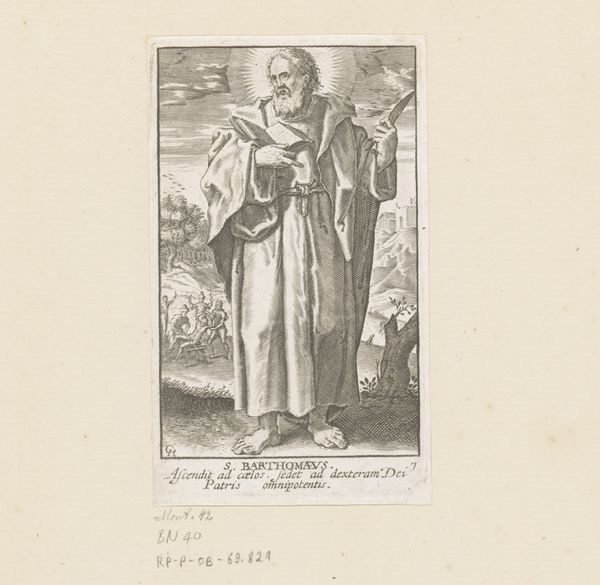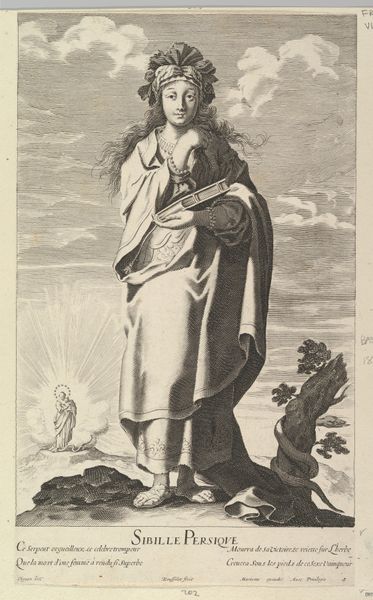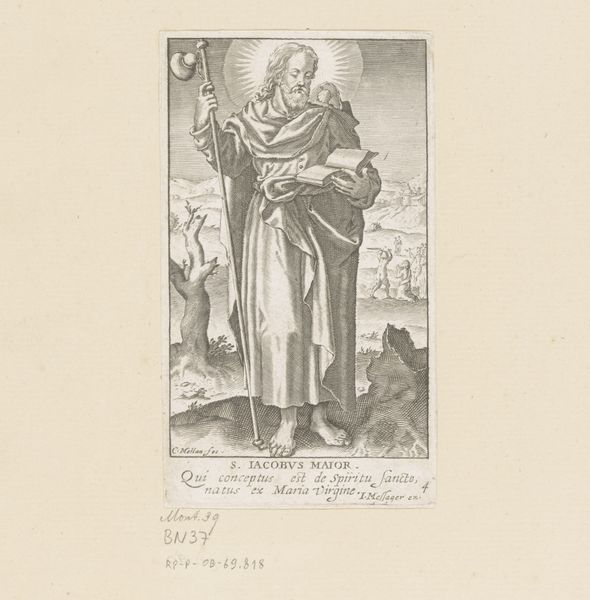
print, engraving
#
portrait
#
baroque
# print
#
old engraving style
#
figuration
#
old-timey
#
line
#
history-painting
#
engraving
Dimensions: height 117 mm, width 68 mm
Copyright: Rijks Museum: Open Domain
Curator: Here we have "H. Mattias," an engraving attributed to Claude Mellan, dating sometime between 1608 and 1649. This piece resides in the Rijksmuseum's collection. Editor: It's arresting, even at first glance. The figure's stark against the backdrop, this incredible level of detail rendered just with lines…it almost vibrates with energy. Curator: Precisely. Mellan was a master of line engraving. What we see here is St. Matthias, identified by the axe he holds, referencing the instrument of his martyrdom. Notice also the halo of radiating lines; it’s an exceptional effect created solely through variations in line thickness and density. Editor: And what are your thoughts about those figures in the background? They appear almost frantic, running or dancing, perhaps. Given what the image has represented through time, what is the status of people depicted in the far? Is it even a representation of people? What about people whose narratives were historically deemed unfit for depiction or documentation in artwork during its time? Curator: That backdrop contributes to the image’s dynamic tension. While Matthias stands firmly in the foreground, the background hints at conflict, and historical context certainly illuminates this contrast. St. Matthias was chosen to replace Judas Iscariot; thus, he represents rectitude succeeding betrayal. The fleeing figures could symbolize those who stray from righteousness or even those displaced as systems shift to marginalize some communities or privilege certain others. Editor: You're bringing up so many critical points here, and this resonates profoundly when we see that there are only men in the distance depicted there. Curator: True, that's interesting. The entire scene seems imbued with a certain era of societal hierarchy and religious structure. Editor: So, considering all that, would we interpret this saint’s placement on the pedestal as his victory and dominance as a representative of the social systems he embodied? And, furthermore, what does it mean in our era? Curator: Indeed. Examining art like this forces us to consider these layered and at times difficult concepts regarding religious iconography. Its enduring appeal, though, lies in its capacity to evoke thought and generate discussions across centuries. Editor: Ultimately, pieces like these are conversation starters that allow us to confront not only art but to analyze ourselves. It urges us to think how societal standards shape art, but art also perpetuates social behaviors that could or could not challenge our moral compass.
Comments
No comments
Be the first to comment and join the conversation on the ultimate creative platform.
